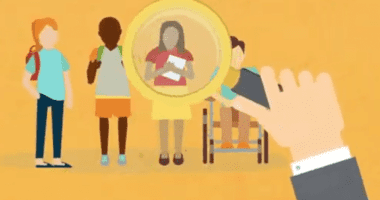Questioning the Deficit
Why do black and Hispanic students perform worse than white students? This is the question at the heart of the achievement gap. The problem, though, is that this question places the blame on students, implying that they somehow lack something and have to “catch up” to their peers. Simply asking that question renders one group of students less than another group.
This is called deficit language, and it has plagued educational research and public conversation around the achievement gap for years despite information about its harm. Deficit language ranges from the genetic inferiority of races (see The Bell Curve, which posits that blacks are genetically less intelligent than whites) to an assumption that hidden, self-perpetuating rules prevent the poor from rising out of poverty (Ruby Payne is best known for this work). In practice, it is when black and Hispanic students are not referred to gifted classes as often as white students or are not provided challenging curricula.
Unfortunately, the very data analyses we use to understand differences, patterns, and progress in educational achievement are often framed with deficit language. This inadvertently creates negative narratives about students of color and low-income students and sends the message that students are the problem. By falling victim to deficit language, advocates and researchers spend too much time focusing on what students don’t have versus what they do have. Student assets, like their background knowledge, experiences, and culture, are valuable resources that can inform the schooling process and potentially impact education systems.
Education researchers and advocates should change the questions and create a counter-narrative to describe the issue from a different lens — a lens that is not focused on student deficits, but on systemic school practices. Instead of asking, “Why do black and Hispanic kids perform worse than white students?” let’s start by asking questions like, “What resources prove most effective in helping black and Hispanic students achieve at high levels?” It is a subtle, but important, distinction. By doing this, we understand students through their success and systems that support and foster their success. Most important, we remove the counterproductive dialogue that reinforces notions of inferiority and underachievement.
We’ve added to our own counter-narrative with one of the Shattering Expectations papers. For that paper, we examined more than 60,000 high-achieving (top 25 percent) students of color to learn not only about their performance, but also about the course offerings, support structures, and postsecondary preparation that set them up for success. Simply acknowledging that high-achieving students of color exist is one of many important ways to move away from the dependence on deficit language.
For more than 50 years, our society has engaged in a deficit-focused conversation, and it has helped cement the educational divide. Often, our words have become our actions. If we are more thoughtful about the language we use, we can better find solutions to create education equity.








